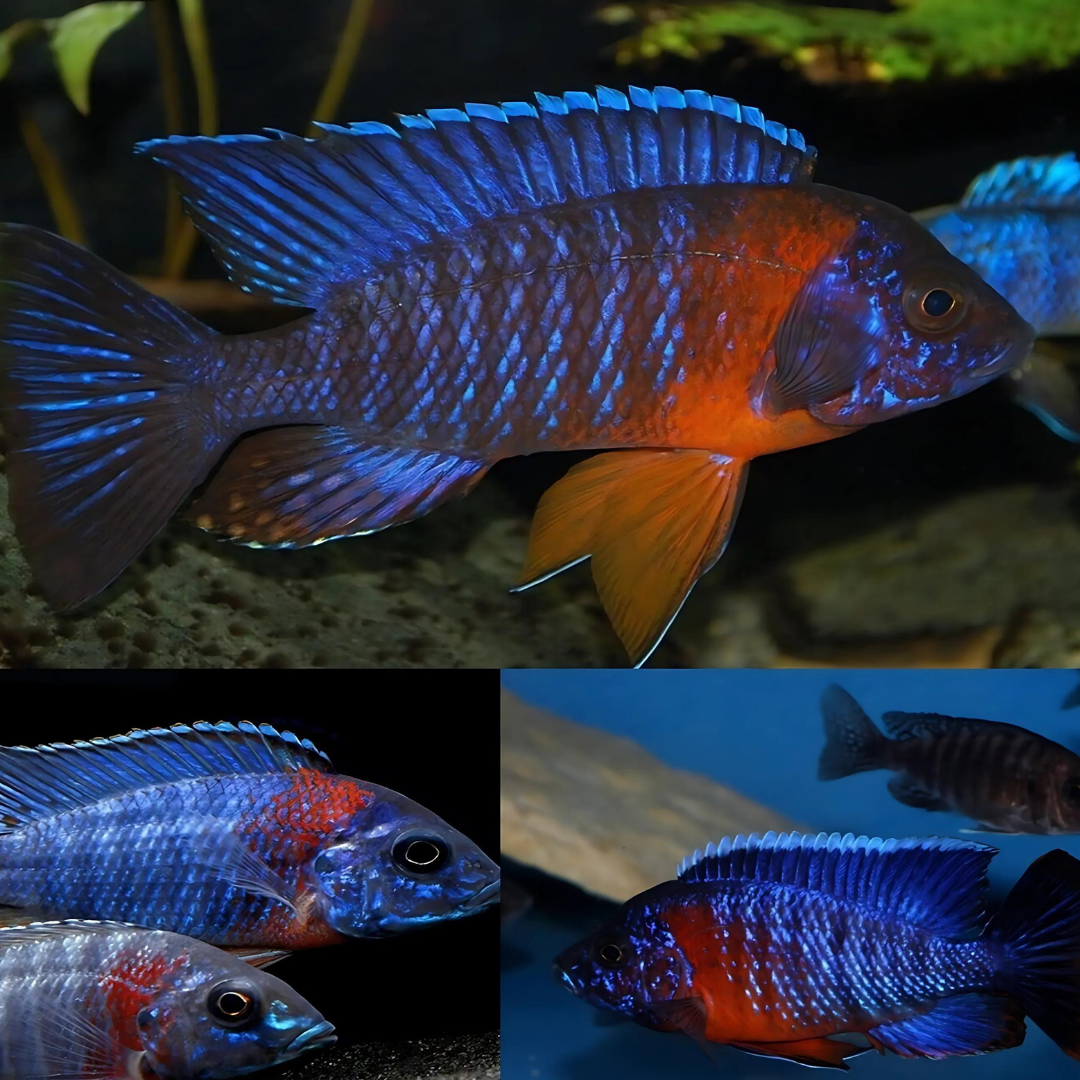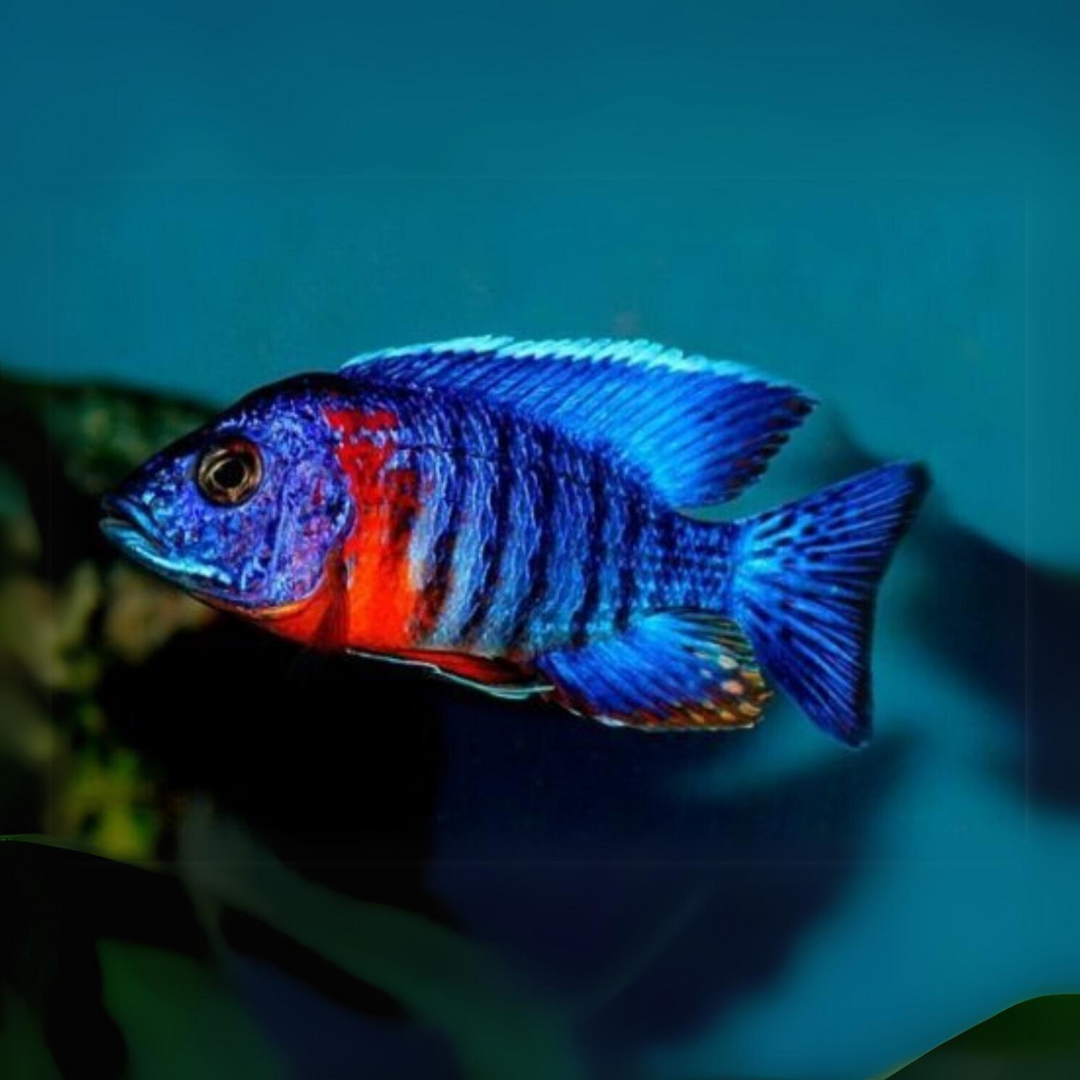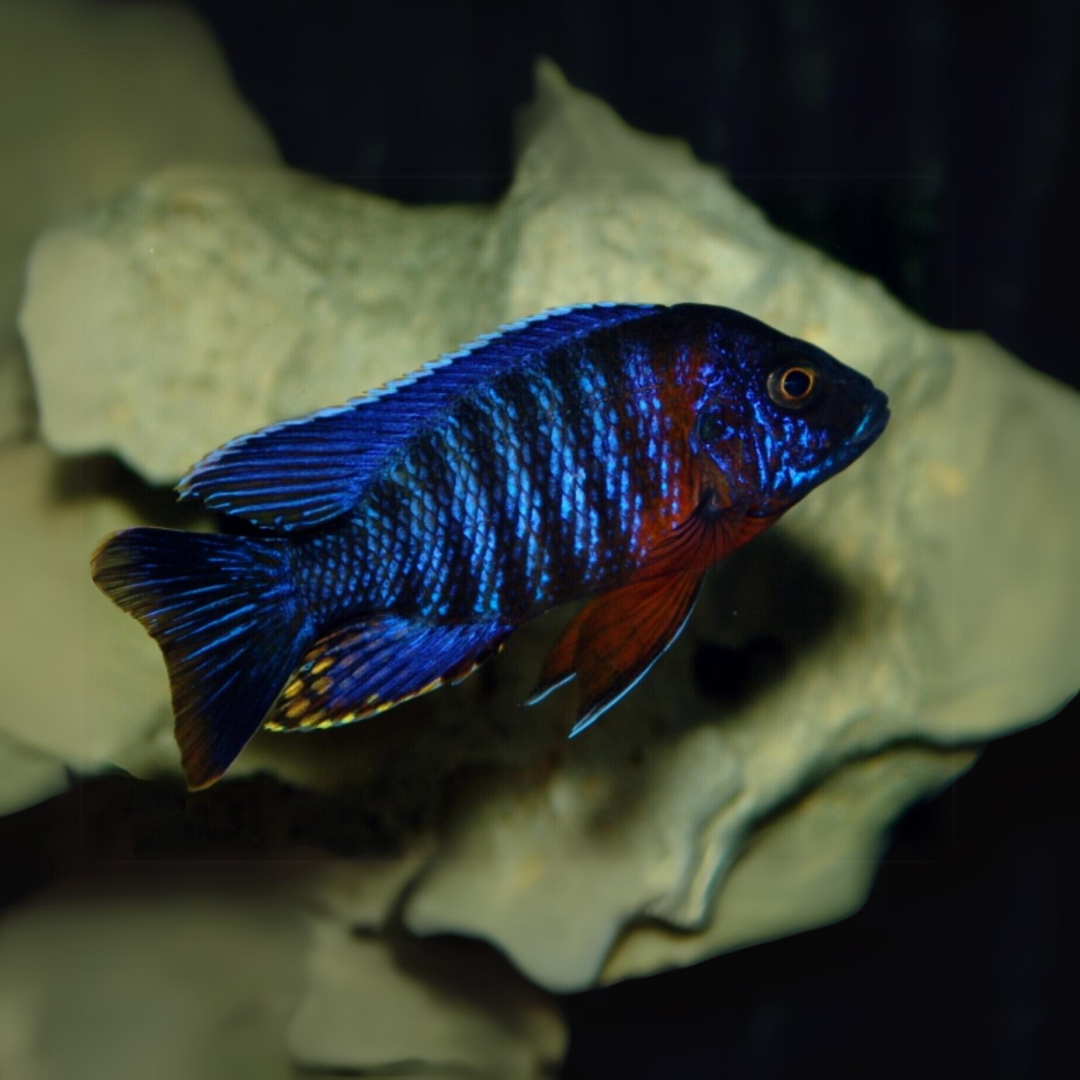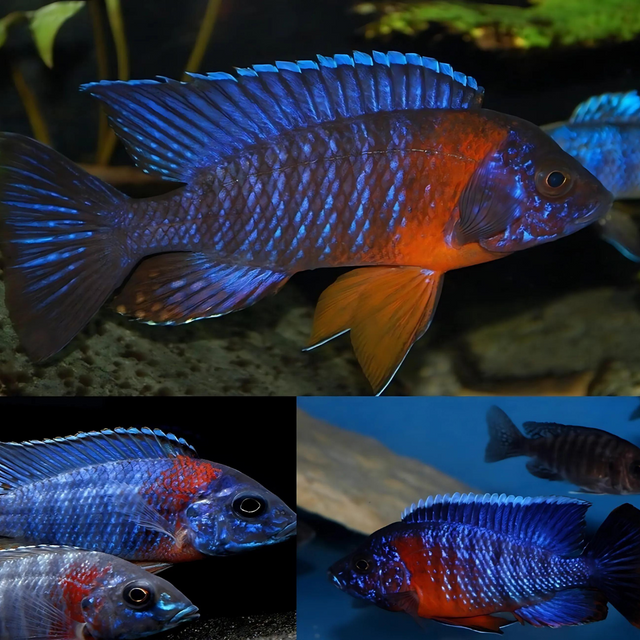Malawi Peacock Cichlid Red Shoulder (Size 2 Inches) | Single
Malawi Peacock Cichlid Red Shoulder (Size 2 Inches) | Single is backordered and will ship as soon as it is back in stock.
Couldn't load pickup availability
Description
Description
The Malawi Peacock Cichlid Red Shoulder (Size: 2" to 2.5") is a striking and vibrant freshwater fish native to Lake Malawi in Africa. Known for its radiant coloration, this particular variety showcases a brilliant red or orange hue across its upper body and shoulders, blending beautifully with blue or metallic tones along its lower half. As it matures, the colors become more intense and vivid, making it a standout addition to any aquarium.
Behavior: Despite its bold appearance, the Red Shoulder Peacock Cichlid is relatively peaceful compared to other cichlids from Lake Malawi. However, it can become territorial, especially during mating seasons. Males, in particular, will establish dominance and claim areas of the tank, where they display their vibrant colors to attract females. While not overly aggressive, they may chase or intimidate other males in close quarters. It is important to provide enough space in the aquarium to reduce stress and aggression.
Tank Size: A minimum of 250 litres is recommended for a single fish, but a larger tank is preferable, especially if keeping them in a community with other cichlids. The size of the tank will help mitigate territorial disputes.
Water Parameters: This species prefers hard, alkaline water, reflective of Lake Malawi's natural environment. Aim for a pH range of 7.5 to 8.5, and keep the water temperature between 76-82°F (24-28°C).
Filtration and Oxygenation: Strong filtration is essential, as Peacock Cichlids are sensitive to water quality. A good current in the water will also replicate their natural environment. Regular water changes (20-25% weekly) will help maintain optimal water conditions.
Diet: The Red Shoulder Peacock Cichlid is an omnivorous species, and its diet should include both high-quality proteins and plant-based foods. In the wild, these fish feed on small invertebrates, algae, and zooplankton.





